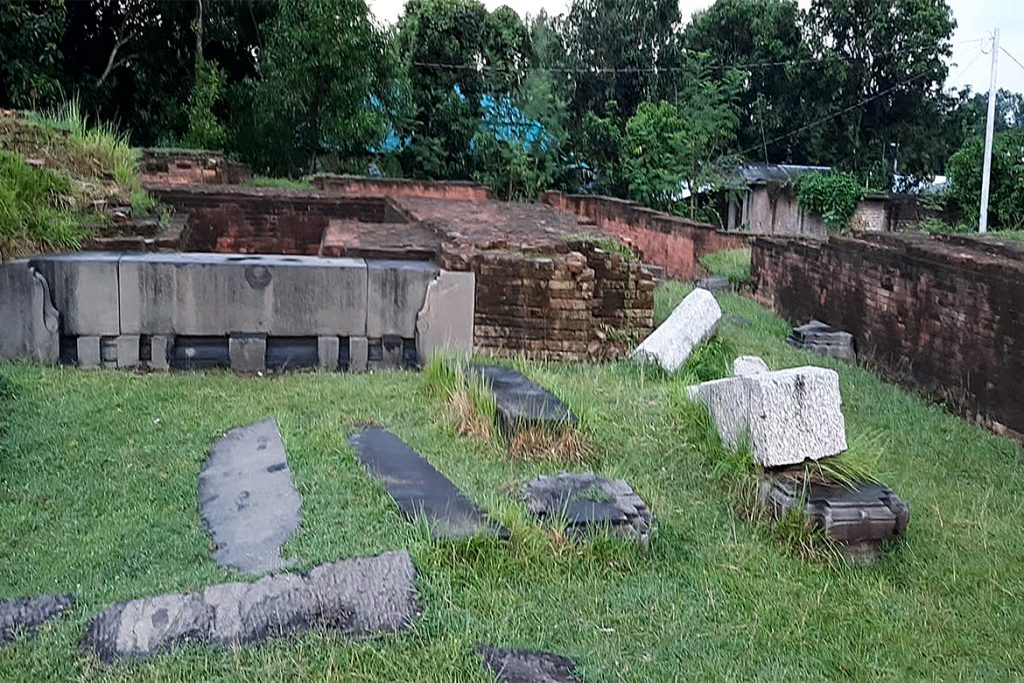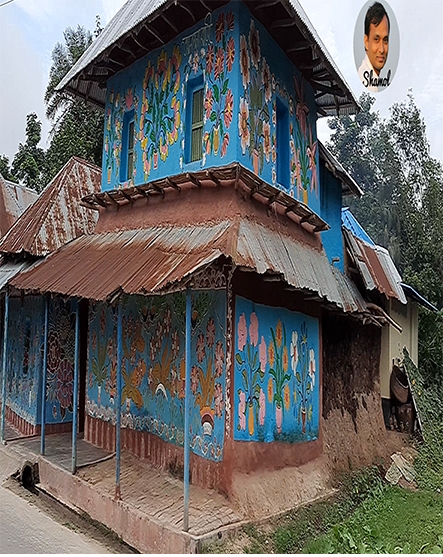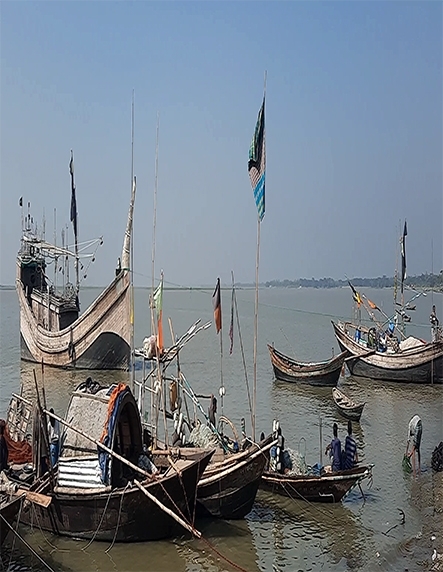Table of Contents
Jagaddal Bihar:
Jagaddal Bihar is one of the most ancient monuments in the Naogaon district of Bangladesh. This ancient monument is located on the north side of Jaipur-Dhamuirhat road of Dhamuirhat police station in Naogaon district. At present the locals consider it to be the ruins of the house of a zamindar named Batakrishna Roy.
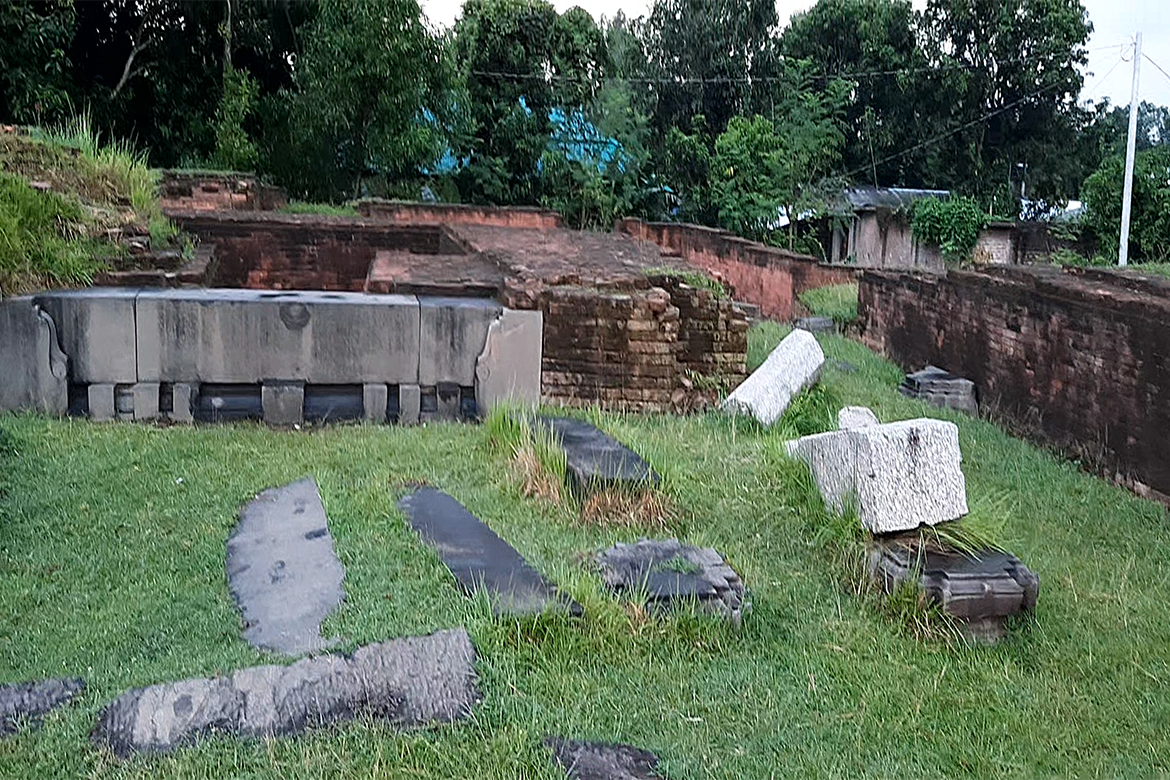
Jagaddal Bihar known from history that King Rampal established the capital at Ramavati after the restoration of the Gaur kingdom. Abul Fazl, the author of Ain-e-Akbar, refers to this place as Ramauti. Padmavati is mentioned in the Dharmamangal poems of ancient Bengal. The city of Ramavati is also mentioned in the copper rule of Madanpal, the son of King Rampal. Dinesh Chandra Sen says that Raja Rampal Jagaddal Mahavihara was established in this Ramavati city. Historian Ramprangupta mentions that Jagaddal Bihar is located in Dinajpur. It is easy to guess that Rampranagupta’s Jagaddal Bihar is the Bihar in question in the Naogaon district. Because earlier this district was part of Dinajpur district. It is mentioned in the Bengali history book of Niharranjan Roy that Raja Rampal built this temple in the eleventh or twelfth century.
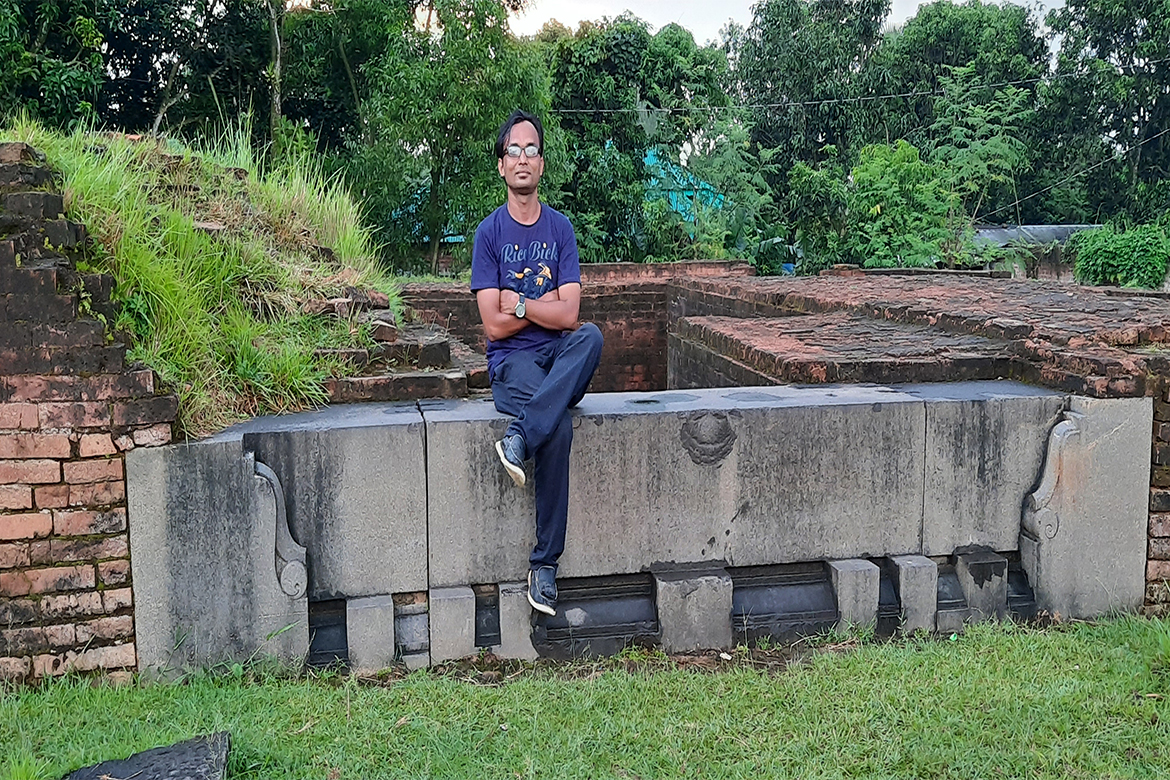
I am Shamol Nath will tell you about it today. Those who are new to my youtube and website will subscribe to his channel and website. Like and share a lot. I can keep this optimism!
Jagaddal Mahavihara:
During the glorious reign of the Buddhist Pala kings in Bengal for four centuries, various kings built innumerable Buddhist monasteries, temples, and stupas throughout their vast empire. King Dharmapala is believed to have built at least 50 self-contained large-scale religious educational institutions. Among the institutions built by Paul, kings are the huge Vikramshila monastery in Magadha, the Bikrampuri monastery in Bikrampur, and the Somapura monastery and Jagaddal monastery in the Barind region.
Probably Rampal (106-1120) built the Jagaddal monastery. According to the Ramcharitam of Sandhyakaranandi written during the reign of Madanpala, the location of this monastery is in Barindri. A number of famous Tibetan Buddhist scholars, such as Bibhuti Chandra, Danshil, Mokshakar Gupta, and Shubhakar Gupta, were associated with the monastery. Researchers prove that several Sanskrit scriptures on the Vajrayana and Tantra philosophy of the Mahayana religion were translated into Tibetan at Jagaddal Bihar. Avalokiteshvara was the chief Buddhist deity of this ‘Sangharam’.
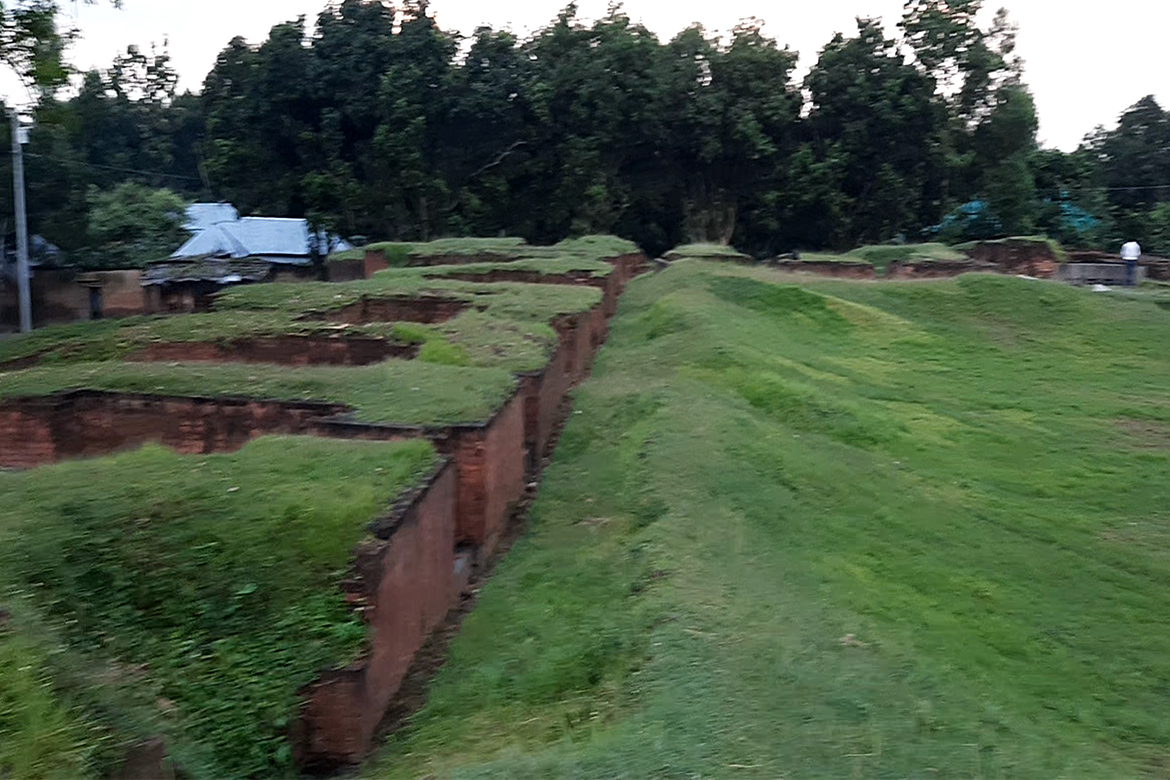
It is believed that Jagaddal took refuge in the monastery after the destruction of the monastery along with other scholars of Shubhakar Gupta and Abhayakar Gupta Vikramshila Mahavihara. Here he wrote many Sanskrit books on Buddhism. Many of these scholars were Bengalis. In addition to writing on religious subjects, he made significant contributions to the development of secular Sanskrit literature, especially poetry. Vidyakar, the compiler of ‘Subhasita Ratnakosh’, was a scholar of the famous Jagaddal Mahavihara.
A.k.M Zakaria identified five ancient sites :
Researcher A.k.M Zakaria identified five ancient sites of the same name in his search of the Jagaddal site. After a careful tour of these places in person, Zakaria came to the conclusion that there were no traces of antiquity left to be considered in the other four places except the Jagdal of Naogaon district. Therefore, he identified the wide mound of Jagdal of Dhamairhat as a possible site of the famous Jagddal Maha Vihara.
Scattered ancient mounds and abandoned ponds cover a large part of the village of Jagaddal. It is located 3 km northeast of Hatitakidanga Bazar on the Joypurhat-Dhamairhat highway, about 1.5 km south of the Bangladesh-India border and 8 km northeast of the Dhamairhat Upazila office. The distance from this place to Paharpur and Halud Bihar Buddhist temples is only 20 and 16 kilometers respectively.
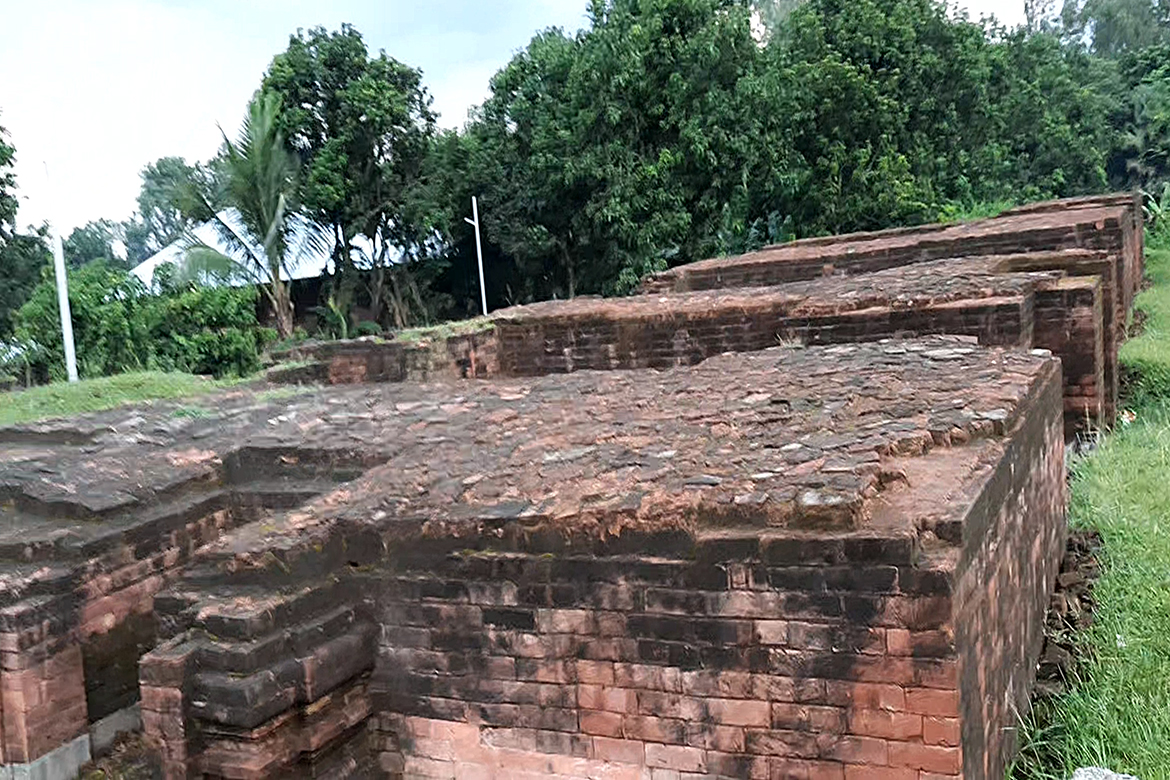
An excellent description of all these ruins can be found in Amiya Basu’s Railway Guide to Bengal, published in 1940. An English translation of Abul Kalam Mohammad Zakaria. I had the opportunity to interview him. During his lifetime. It is stated here that there is a circular mound (actually a mound) about 1000 feet in circumference near the Chiri or Sri river, about 3 miles from the Gurub pillar. There is about 8.58 m. There is another pile of measurements and there is a huge tank nearby. An octagonal stone pillar has also been discovered here. The octagonal monolithic pillar mentioned in the above guide book is located at Mangalbari, 5 km southeast of Jagaddal village. This is the famous Garuda Pillar or Badal Pillar inscription erected by Bhatt Gurab Mishra, Minister of King Narayanpal (654-906 AD).
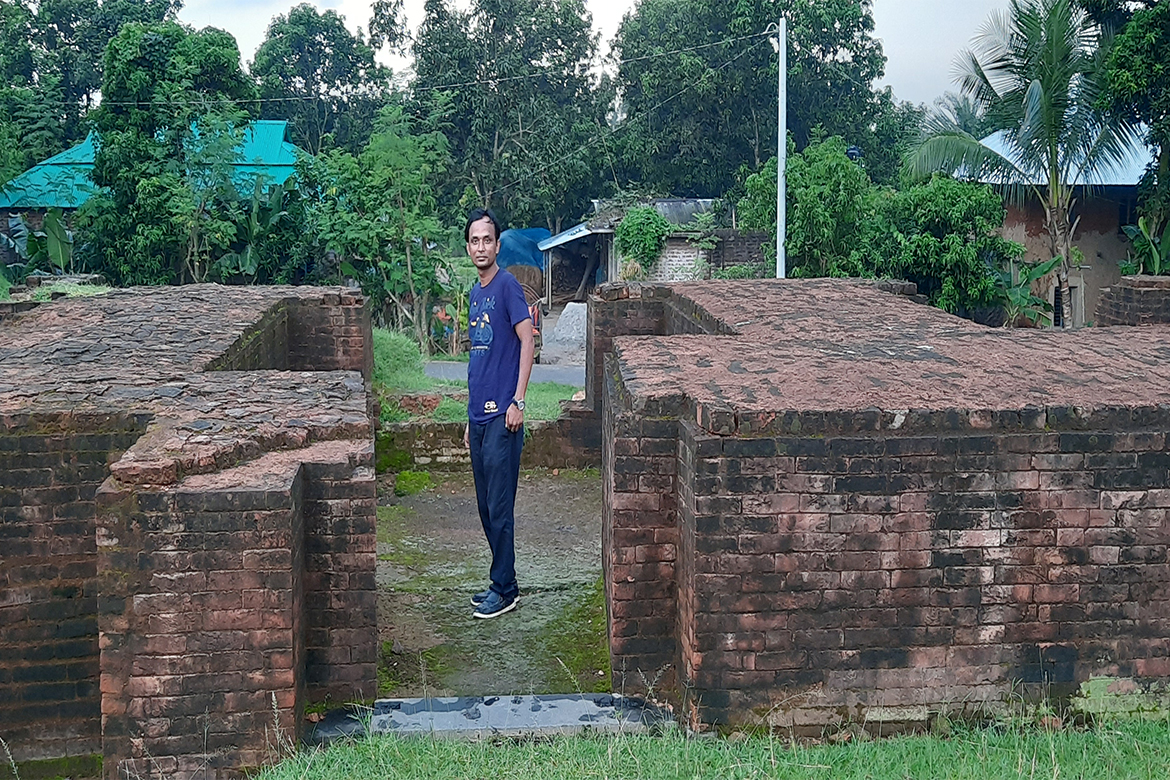
Department of Archeology:
ponds have been filled, but some mounds still survive in isolation. Of course, these are now either in the illegal possession of the villagers or have been destroyed by them. Mosharraf Hossain, an official with the government’s Department of Archeology, conducted a preliminary survey of the area in 1973-74 and recovered a broken black basalt stone slab and a broken bronze bell from the home of a Benjamin thief. The plaque carves three statues of the meditating Buddha. The two specimens mentioned above are believed to have been recovered from the Jagdal site. Considering the importance of this archeological site, the Department of Archeology mentioned the mound mentioned in the winter season of 1998.
He started excavating. As a result, the ruins of a Buddhist monastery were partially unearthed. So far only 6 rooms of the south side building and 4 rooms of the west side building of this monastery have been discovered. Each of these measures 3.5 m × 3.3 m. Inside some of these rooms of the monks and in the verandah in front of them there were stone altars for setting up idols. The altars found in a few rooms in the east side building of Paharpur Bihar are similar to this. In addition to the above 11 secluded rooms, excavations have also uncovered an entrance on the east side and a small tomb on the west side building. Interestingly, there were probably four semicircular side towers at the four corners of the monastery, as is not commonly seen in ancient temples.
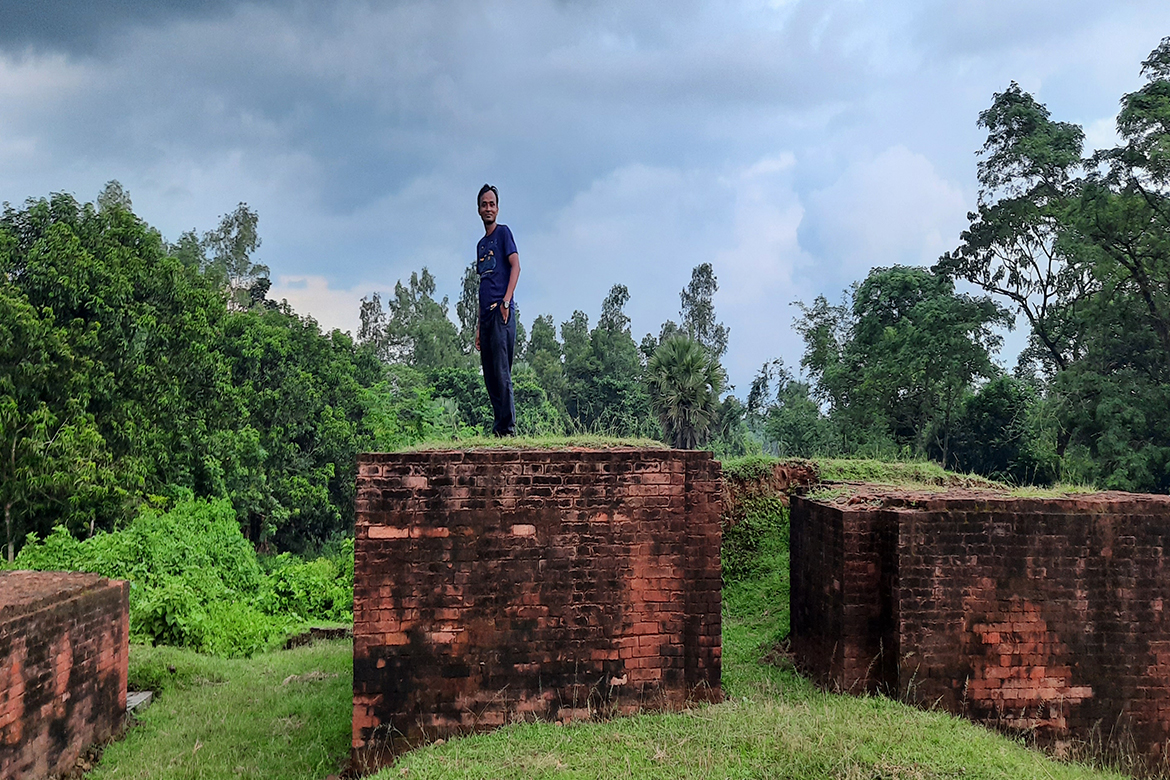
In addition to the terracotta skulls recovered from the southwest corner of Bihar, several terracotta plaques depicting human and animal figures have been found in different parts of Bihar. They have statues of gatekeepers, archers, deer, birds, etc. engraved on them. Many of these plaques, used as ornaments on the exterior of the west wall, have been found intact. The ornate bricks found here have lotus petals, chains, and zigzag spiral designs. Other small artifacts include lots of old pottery as well as iron nails, stone beads, etc.
The most important artifacts recovered from here are, of course, two inscribed stone pillars, which help to determine the date of the site. One was found near the eastern entrance of Bihar, the other in the southwest corner. On the octagonal shaft of the first pillar near the eastern entrance, the name of Sri Makkar Nandi of Gangapur, the scribe of the ancient Bengali script of the twelfth/thirteenth century, is inscribed. The stone pillar found in the southwest corner of the temple is still half-buried in the excavation pit. It also has the name of Sri Bhavdas, a member of the scribe community, inscribed in the ancient Bengali script of the same period. Mr. Makkar Nandi and Mr. Bhavdas were both members of the Lipikar community and were probably residents of Jagaddal or its vicinity.
The results of a brief excavation carried out in 1998 on a huge mound in the village of Jagaddal are encouraging but not final. The location of Jagaddal Mahavihara, the probable time, and the extent of the ruins are still speculative.
Where to go Jagaddal Bihar:
Jagaddal Bihar is one of the most ancient monuments in the Naogaon district of Bangladesh. This ancient monument is located on the north side of Jaipur-Dhamuirhat road of Dhamuirhat police station in Naogaon district.
# You can visit various social sites of Shamol Nath. Lika as: YouTube, Facebook page, Facebook profile, Twitter, Instagram, LinkedIn, and website. He always reviewed Literature, Film, Travel, and Historical articles.
For more information. see more…
Links of Newspaper: see more…
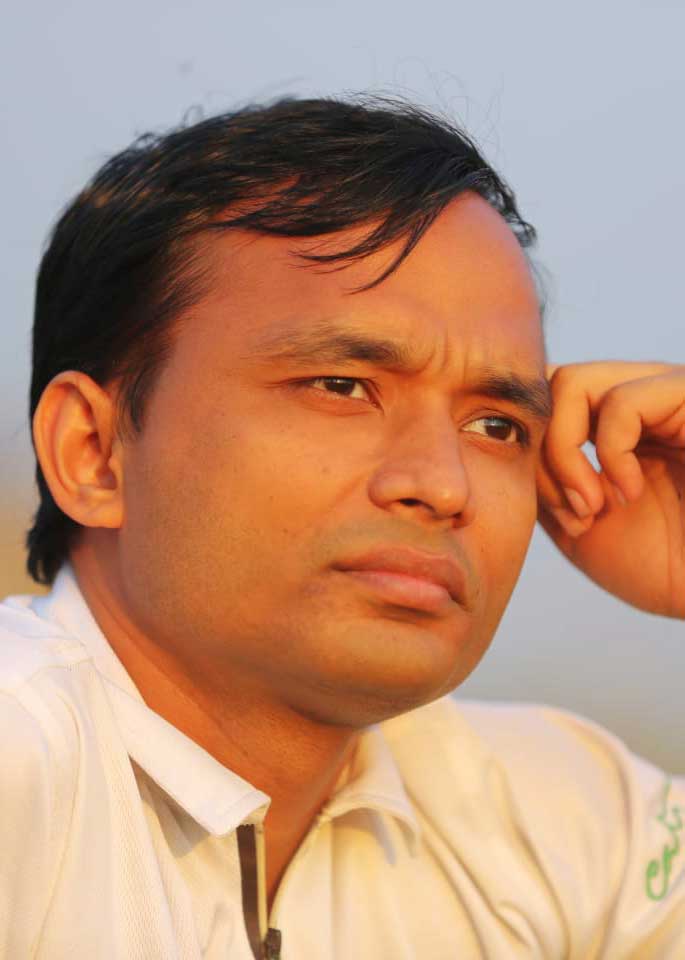
Shamol Nath is a writter & Documentary film Director. Shamol Nath Write and made documetaries over the decade.
He mainly focus on literature and films. Write poems, story, eassy and recently write a novel etc.
